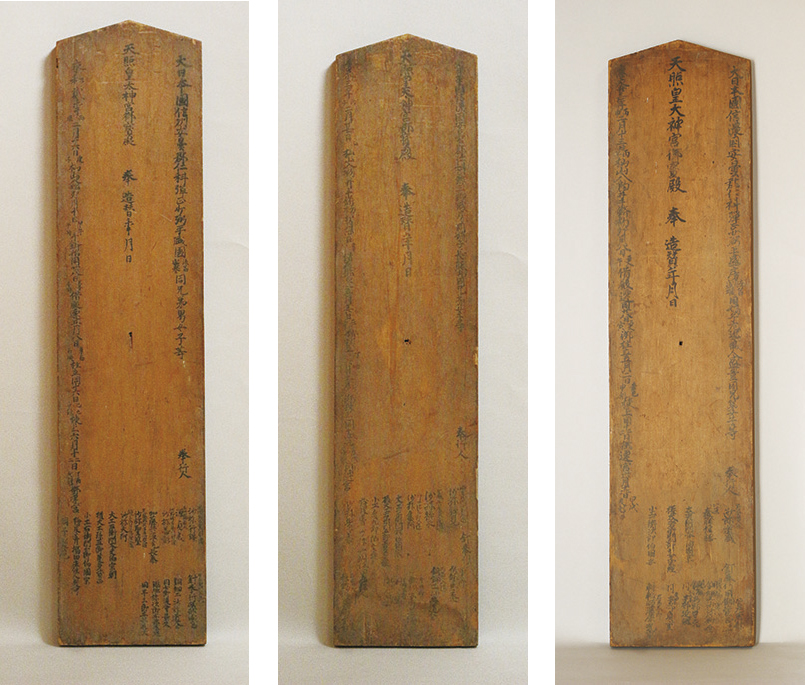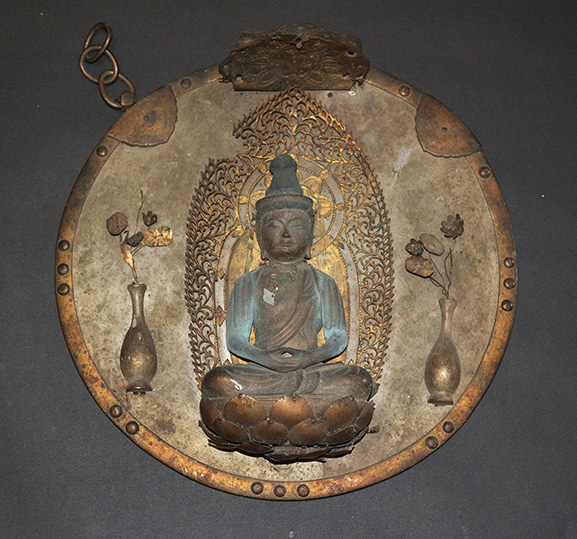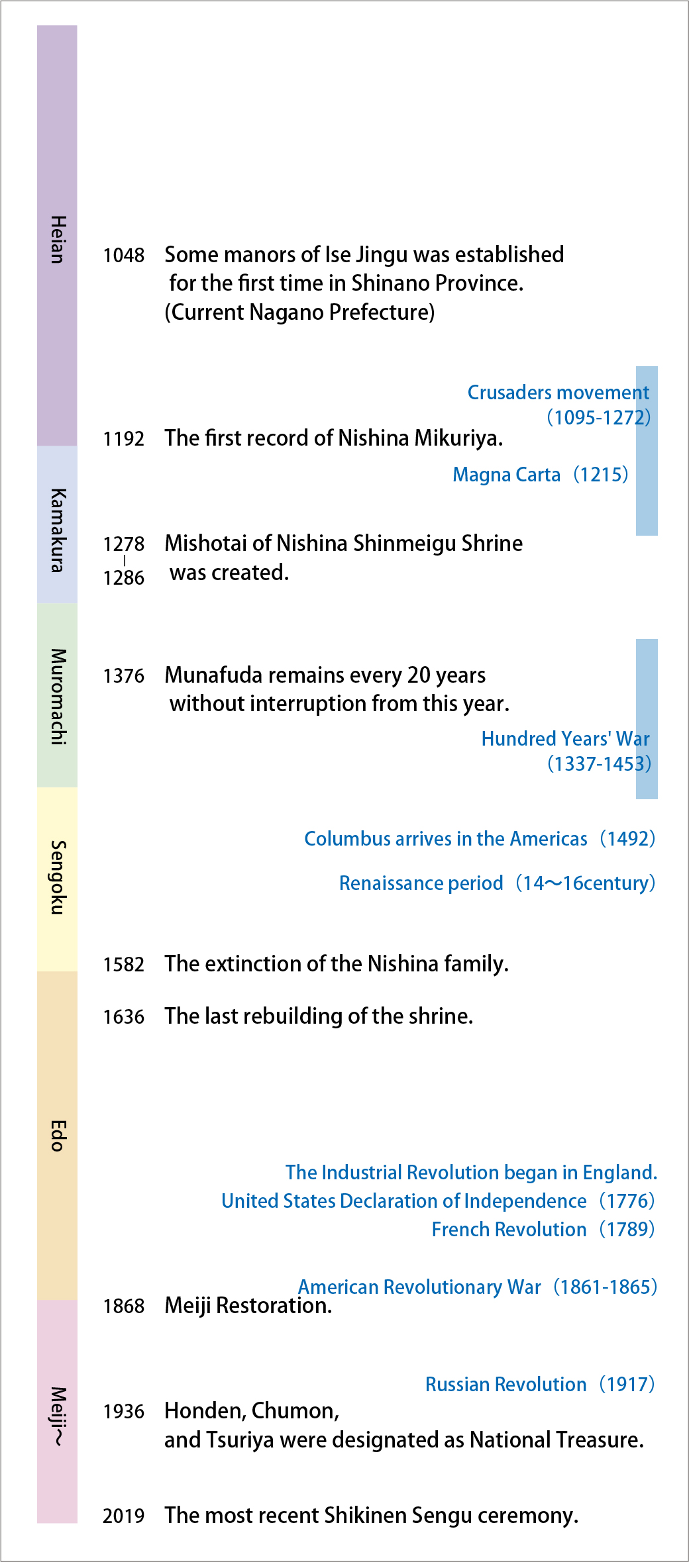
 Important Cultural Property of Nishina Shinmeigu
Important Cultural Property of Nishina Shinmeigu
In this treasure storage room, the National Important Cultural Properties "Munafuda" and "Mishotai" are stored.
"Munafuda" is a record of the rebuilding and repairing of the main shrine every 20 years, and it states when, who, and how the work was done. The fact that 35 of these tags have been inherited from 1376 to the present shows that "Shikinen-Sengu" has been carried out without interruption. 27 of them dating until the end of the Edo period, have been designated as National Important Cultural Properties.

"Munafuda"
After the extinction of the Nishina family in 1582, the management of the shrine and the service to the Shinto god, called "Kami", were continued by the domain of Matsumoto during the Edo period, and then Kita-Azumigun (area north of Matsumoto) took over since the Meiji period. This shows that this shrine has been attracted widespread worship in Omachi and Kita-Azumi area.After World War II, in Japan, politics are separated from religion , therefore local governments were no longer involved in shrines. Today, the Ujiko of the Miyamoto district, where the shrine is located, play a central role in maintaining the traditions of the "Shikinen-Sengu" and carrying on the rituals and "Kagura".
Kami is said to be invisible, but as they mingled with Buddhism introduced from the Asian continent, the idea that Kami is temporary formed of Buddha manifesting themselves in Japan was born. Buddhist statues represented in mirrors made of copper or other materials were called "Mishotai" because they were the true image of Kami, and the custom of hanging them on the doors and walls of shrines and worshipping them continued until the end of the Edo period.

"Mishotai"
Since Amaterasu Omikami, the deity of Nishina Shinmeigu Shrine, was considered to be a temporary form of Dainichi Budda, most of the statues here are taking a form of Dainichi Buddha. Here, there are 16 "Mishotai" remained, 5 of which are designated as the National Important Cultural Properties.
Many of them are thought to have been built during the Kamakura to Muromachi periods, and some states the age of 1278 and 1286.






